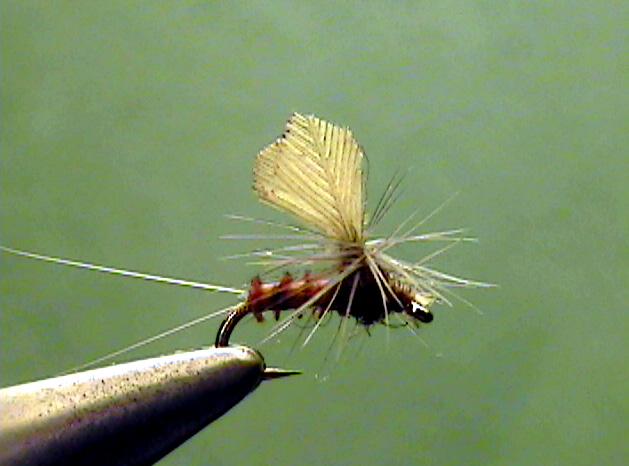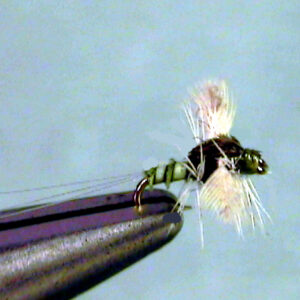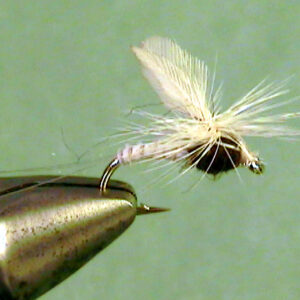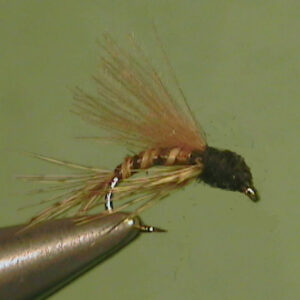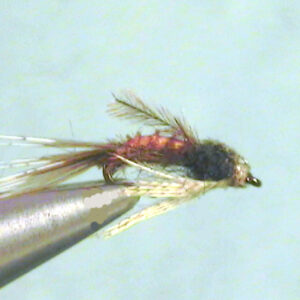Hook Size: 20
The Perfect Fly Male Trico Dun is an excellent imitation of the adult stage of life of the mayfly. It imitates the mayfly as it drifts or floats on the surface, drying it wet wings enough to fly off the water onto the banks, bushes or trees where it will eventually change into the spinner stage of life. It even imitates the dun down to two or three tails and it two upright wings. It is fished on the surface as a dry fly. It should be treated with floatant.
The little Trico duns hatch in most stream in huge numbers. I’m sure many of
you have seen the large clouds formed by the spinners in the air in the early
morning on a hot summer day even if you didn’t know what they were. When the
duns cover the water and you cast your fly among them, it often is overlooked
simply because there are so many duns on the surface.
Dun Presentation:
You an usually spot the trout feeding on the duns. The best procedure is to wade
below the risers and get as close as you can without spooking them. Fishing a
tiny dry fly isn’t easy when you cannot see it and getting close helps a lot. This
also lets you make more accurate presentations.
There are some situations where you just cannot get below feeding trout to cast
to them. One example is a deep pool or deep below the feeding trout. In these
cases my need to use a down stream or a down and across presentation. It just
has to be longer than the upstream presentation and this makes it difficult to see
the fly. Whenever you can, you should try to approach them from their back side
meaning you should fish in an upstream direction.
If you find that the trout are not taking the male or female dun you are fishing,
change to the other one. It may not make a difference but some very good Trico
anglers that have fished this hatch for years swear by it. That is why we make
both imitations. We will let you decide if it makes a difference.
